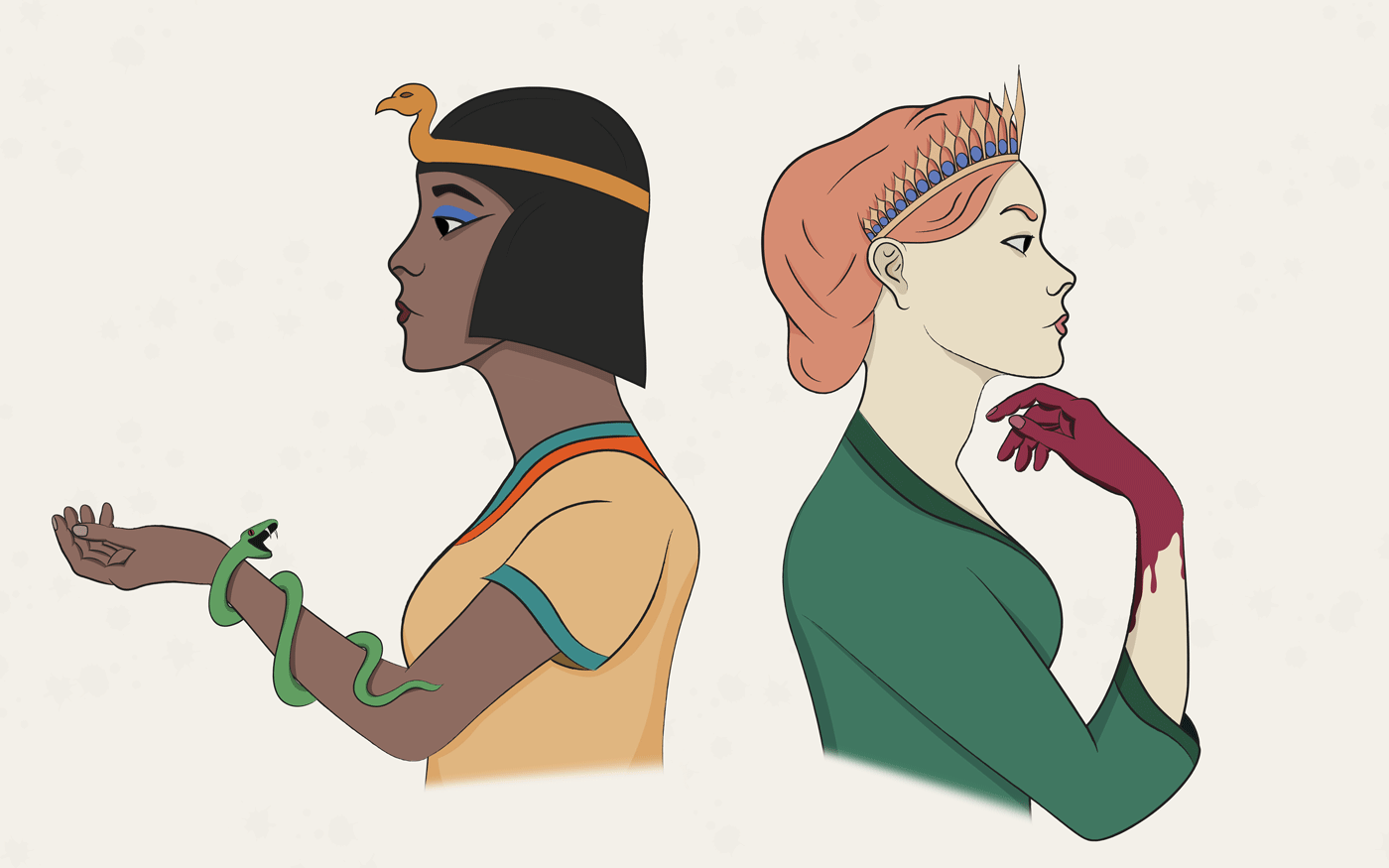

Graphic Design
September 2020
William Shakespeare's depiction of women is never consistent. Some women are imperious and ruthless. Others are gentle and kind. And some are silent and seemingly insignificant. This infographic breaks down the role of women and gender in the bard's plays.
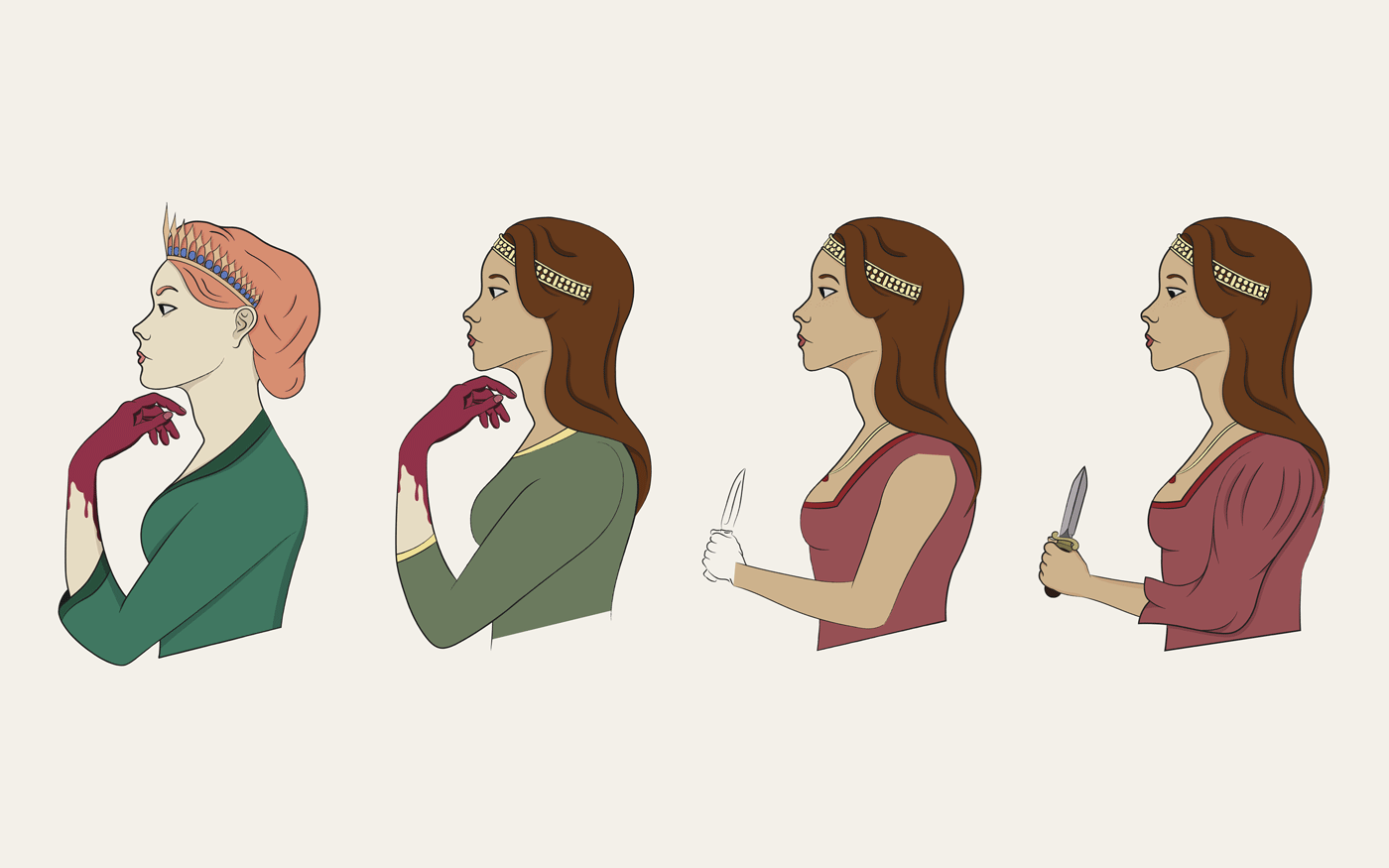
To create new characters, I reused Lady Macbeth's Silhouette and created variations in clothing, hair, body postion, and colors.

I used a picture of the Globe Theater—which sometimes stages gender-inverted Shakespearean plays—as a reference for my illustrations.
Created during my time at the University of North Carolina, this project required me to design an infographic related to sports or entertainment. I’ve been a Shakespeare fan since high school, and after reading As You Like It, I became particularly interested in the role of gender in his plays. So I decided to explore Shakespeare’s complex—and at times troubling—representation of women. I examined some of his most famous female leads, the way femininity is represented on stage, and the number of lines spoken by women in each of his plays.
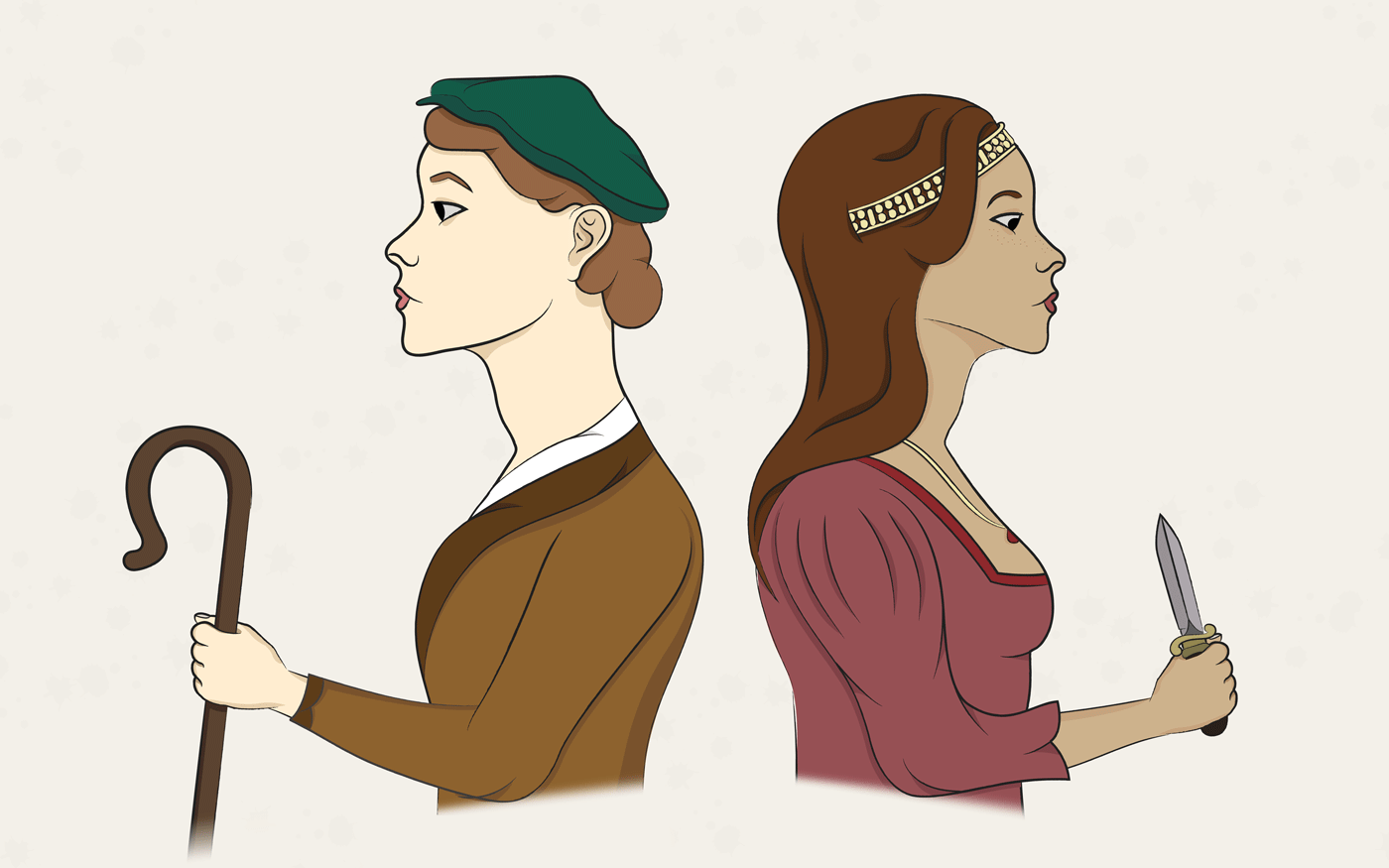
As You Like It's Rosalind and Romeo and Juliet's Juliet both invert Elizabethan gender roles—Rosalind by dressing and acting as a man, and Juliet by taking the traditionally masculine role in her relationship.
To inject a sense of modernity in the project—which I worried some viewers might consider boring or overly academic—I used a blocky, comic book style for shading and coloring. Additionally, to offset the similarity in the character’s silhouettes, I gave each woman a distinct costume that reflects their storyline (my favorite is Lady Macbeth’s bloody hand). While most of my work on this project was done in Adobe Illustrator, I also spent quite a bit of time in Microsoft Excel, organizing a dataset about lines spoken by every character in Shakespeare’s work.
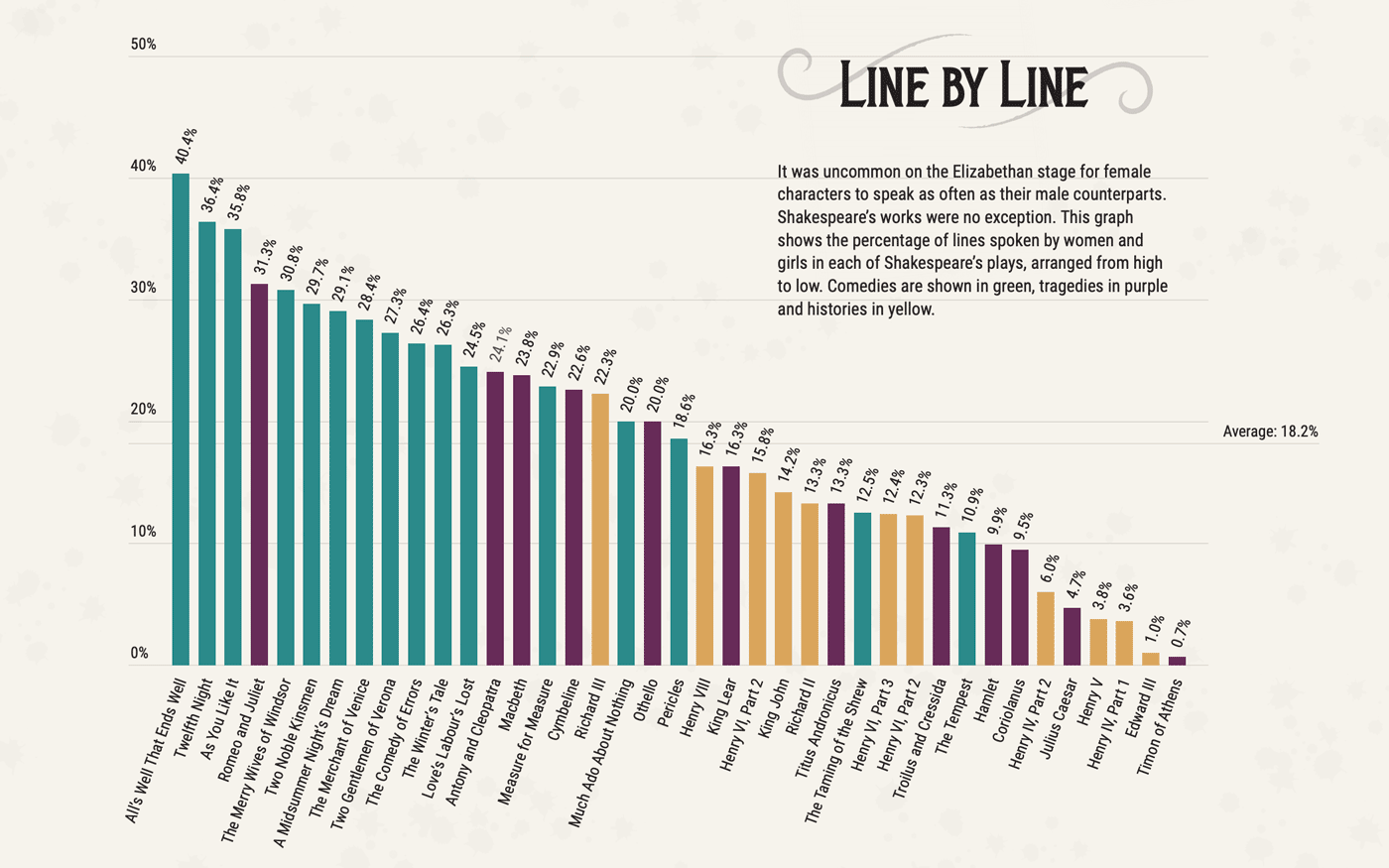
The infographic depicts the percentage of lines spoken by women or girls in each Shakespeare play. Comedies (green) frequently gave women more stage time than tragedies (purple) or histories (yellow).
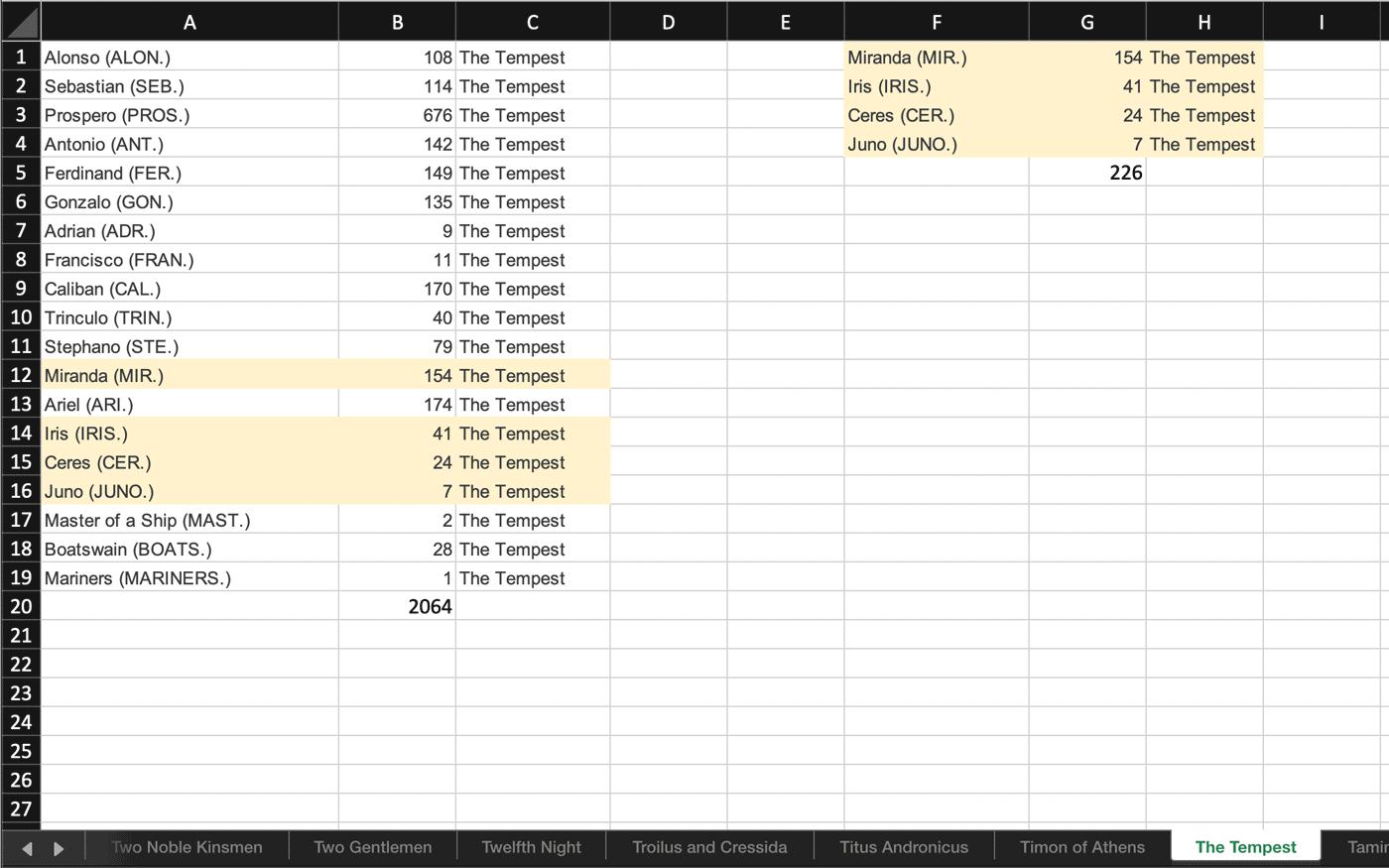
To determine these percentages, I organized information about the number of lines each character speaks in each play. In The Tempest, women speak 226 of a total 2064 lines.
The final format of this infographic is a bit unusual—it’s over three feet tall—but the choice was deliberate. I like to imagine this infographic as something that a high school English teacher might put on the back of their classroom’s door—something students can scrutinize and (hopefully) learn from while reading Romeo and Juliet.